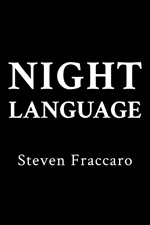Wendy
Whelan is one of the great dancers of the past twenty-five years. In honor of
her retirement from the New York City Ballet on October 18, we’re reprinting a
poem written many years ago, when she first rose to prominence.
Wendy Whelan
The
lines in her arms,
calf
muscles like fists
then
elongated,
and
her swiftness
cut
through space,
define
it.
An
exotic,
she
moves,
when
she moves
time
stops.
When
she danced with Hübbe,
she
was different,
they
danced
as
if they were
in
flagrante delicto,
which
is the way
it's
supposed to seem.
To
see her dance
in
Stravinsky Violin Concerto,
very
close to perfection,
eternity
in a moment,
we
want it to last forever.
Is
this art or is it life?
Poem
written at the bar at Sperry’s, Saratoga Springs, NY, 1994, Steven
Fraccaro.
Wendy Whelan first came to my attention in 1989 when she danced in Episodes, Balanchine’s choreography set to the astringent Webern music. After that, it was a progression through the Balanchine leotard ballets, various new pieces, her slinky rendition of the Coffee “Arabian Dance” in The Nutcracker, but ultimately her handling of the woman’s part in the second pas de trois in Agon that defined her as a virtuoso.
Wendy Whelan first came to my attention in 1989 when she danced in Episodes, Balanchine’s choreography set to the astringent Webern music. After that, it was a progression through the Balanchine leotard ballets, various new pieces, her slinky rendition of the Coffee “Arabian Dance” in The Nutcracker, but ultimately her handling of the woman’s part in the second pas de trois in Agon that defined her as a virtuoso.
That
was in 1993. Soon afterwards, she inherited the lead ballerina role in Agon,
the most demanding role in the Balanchine modernist canon. There have been
numerous very accomplished dancers who have danced this part—Diana Adams,
Allegra Kent, Suzanne Farrell, many others. But Whelan brought something else,
not herself so much as an exact depiction of the music, the slicing angularity
and drama of what Stravinsky and Balanchine must have intended. When she
danced, it wasn’t about her, it was about the precise movement of arm and leg,
about something both fierce and mysterious.
If
you don’t believe me, take a look at the various video clips of Diana Adams,
Suzanne Farrell, Darci Bussell, anyone else in Agon. Then watch Whelan
dance the pas de deux in the film “Bringing Back Balanchine.” Is there really
any question?
Strangely
enough, she was also quite magical at the opposite end of the spectrum, in one
of Balanchine’s most romantic ballets, Liebeslieder Walzer and in Opus19/The
Dreamer by Jerome Robbins. These performances will stay in my mind forever.
Although retiring from
City Ballet, Whelan is continuing to dance, with a series of projects scheduled
for this year and next. These include Wendy Whelan: Restless Creature and upcoming
collaborations with Edward Watson and with Basil Twist.





